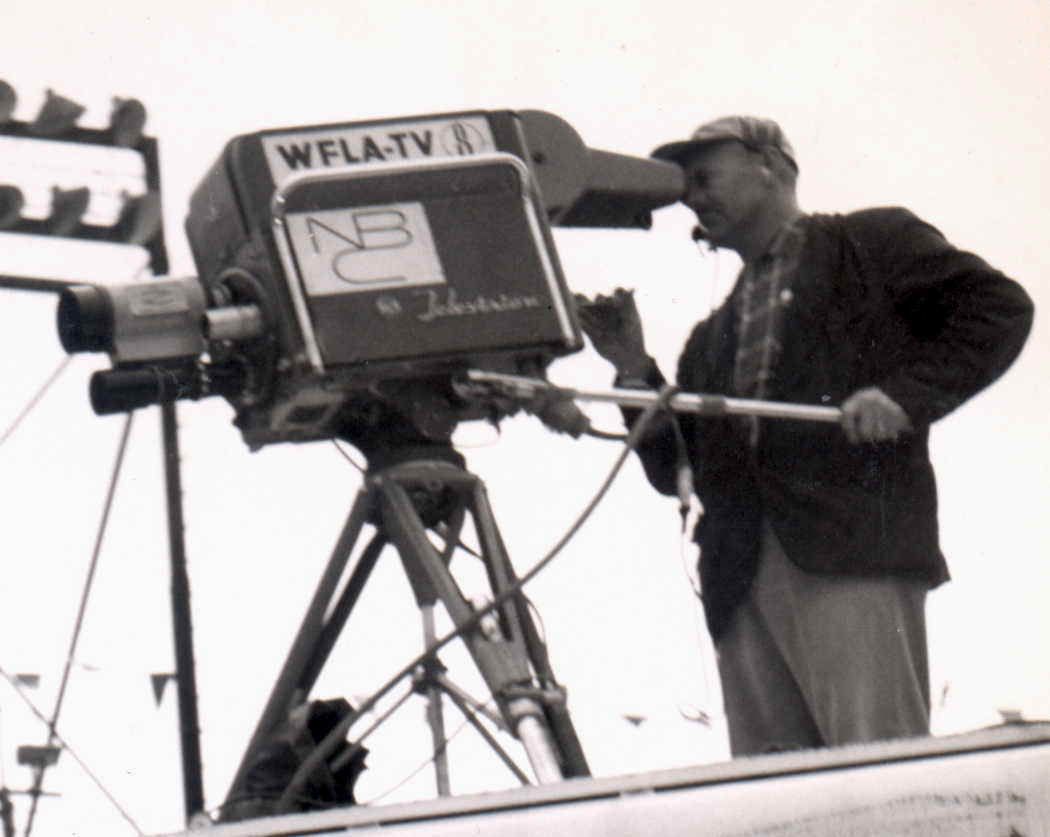WFLA's original studio at 905 E. Jackson Street
STATION BREAK
Adrian's background in servicing TVs and radios gave him an advantage when formally studying electronics. He passed the exam for an FCC First Class radiotelephone license, making him the youngest person in the area to hold one. "That's how I got into broadcasting at the age of 18," explains Adrian. "A local electronics supplier made a call on my behalf to the Chief Engineer at Channel 8, Joe Mitchell, and recommended me for work at the transmitter."
WFLA's original studio at 905 E. Jackson Street
"I got into WFLA's radio station in 1958 and started part-time at the transmitter, and soon was given a full time position. My day would start with the sign-on shift at the radio station, and then I'd go downtown to WFLA's TV studio to fill out my shift…sometimes on the crew running boom for a cooking show. Later I worked in master control under John Schnurman, who had worked for NBC. He taught me all about video."

An RCA TK-31 camera on remote.
WFLA was a wonderland of
broadcast equipment and young Adrian eagerly absorbed it all.
In hindsight, he acknowledges that what astounded him at the time was
really only the dawn of television engineering.
"The technology was a lot simpler…monochrome cameras...no VTRs," explains Adrian. "You could see a lot of the problems very
easily…you spot the tube or resister that was burned out…the capacitor that
oozed its electrolyte." But is was
the the RCA
TK-11 camera that was a revelation to Adrian. "The orth (orthicon tube) was so impressive with all the
electrodes in it…and to comprehend that putting an image on the target plate
that gets translated into an electrical current that makes the picture…the
first time I looked at it was overwhelming.
A combination of mechanics, optics, and electronics. Compared to the radios and TVs I'd been working on, it was
amazing. Of course, the more I
worked on it the more I realized it was really pretty simple technology.
The camera had much in common with a TV receiver…the orthicon had a
yoke and it scanned the just a TV set…there was a viewfinder which is really a
small TV, and other than the pre-amp and the camera control unit, there wasn't
really anything that complicated about it.
You got past being overwhelmed."
WFLA's mobile unit taking a flyer.
Adrian's regular Channel 8
duties placed him on the mobile unit, which was very active for local
programming and the NBC network. "We
did a lot of 'Wide Wide Worlds.' We microwaved one segment from a boat to the land…and then
on to NBC in New York, which was live at the time.
I would usually help with the physical setup and then operate from the
unit's master control console…shading cameras and such."